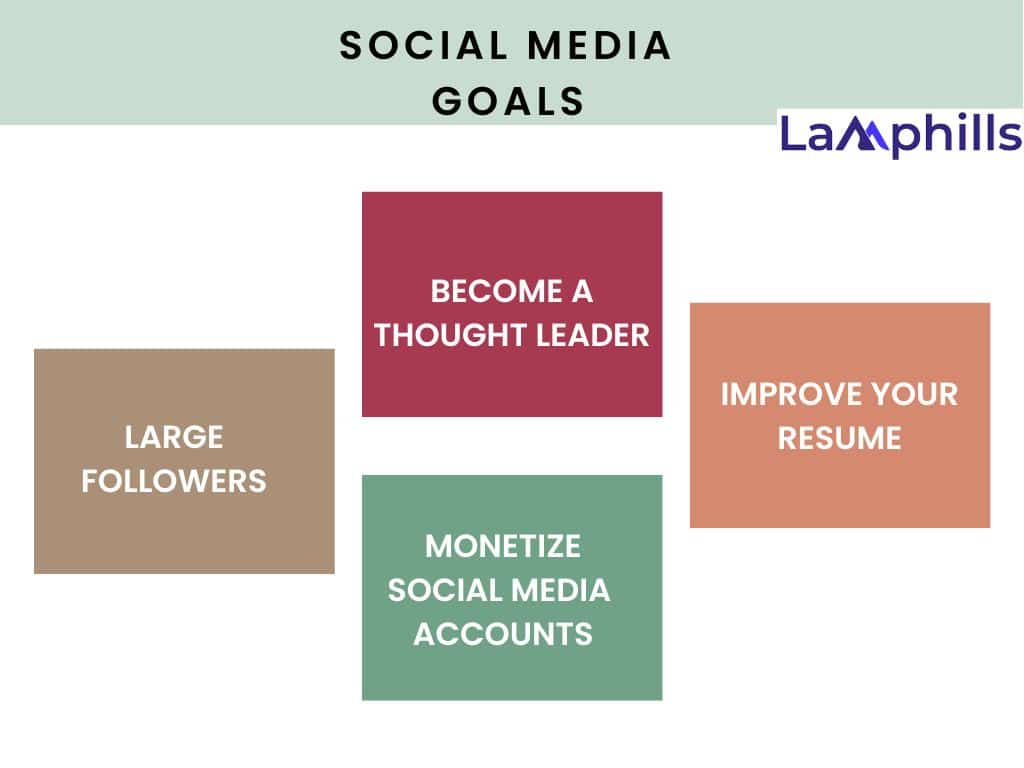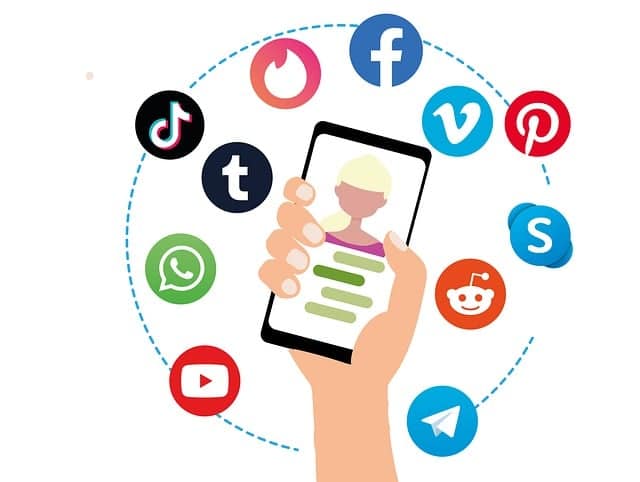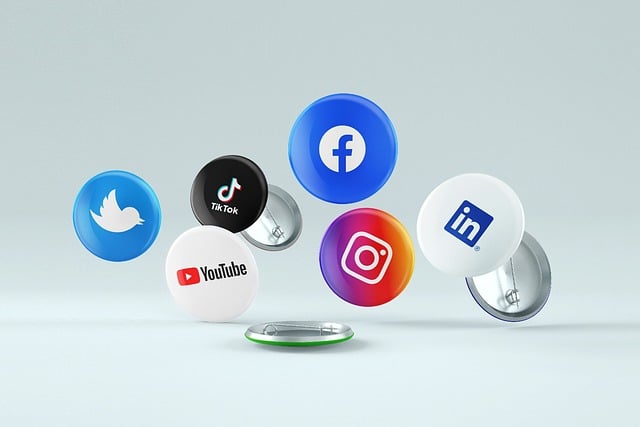To successfully create a personal brand on social media, you’ll need to develop a brand persona, maintain a consistent online presence, build relationships and an efficient network, use different social media platforms, and regularly measure your efforts to improve your brand.
Personal branding is about creating an identity for yourself and promoting it to shape how the public sees you. And with about 59% of the world’s population using social media, these platforms are great for reaching audiences and promoting yourself.
However, building a strong personal brand on social media takes work. It involves branding, creating value, marketing, and networking. Many people fail at personal branding on social media because they struggle to build a following, but anyone can succeed by following certain steps.
This article will show you these steps for successful social media personal branding. By the end, you’ll be closer to building a strong personal brand on social media.
Let’s get started.
Key Points
- Start by identifying what makes you unique, including your values, personality, and what you can offer to others.
- To succeed in personal branding on social media, you need to maintain a consistent online presence.
- Building a personal brand means creating a good reputation and making an impact by sharing your thoughts, experiences, and expertise.
- Engage with your audience by replying to comments, answering questions, and responding respectfully to criticisms.
#1. Understand The Importance of Your Brand
Building a personal brand on social media means making a unique image of yourself and sharing it with others. It involves creating a reputation for something you love and want to be recognized for. That is, sharing your personality, passion, and skills in a way that benefits others.
This helps you control how people see you. Nowadays, social media is essential for this. It lets you reach a lot of people. Having a strong personal brand online can benefit you in many ways. It can make you seem more trustworthy and influential. It also helps you have a greater impact.
To build a personal brand, you must first discover what makes you unique.
#2. Define Your Brand
To create a strong personal brand, start by identifying what makes you unique. Think about your values, personality, and what you can offer to others. This is your brand identity, what people will remember about you. Consistently sharing your special message with a specific audience on your social media will help you stand out.
#3. Knowing Your Strengths and Values
Your brand is something you love to do that also helps others. To build your brand online, start by figuring out your strengths and what you value.
Personal brand = what you love to do + what brings value to others
The first step is to identify “what you love to do.” To find out this, ask yourself:
– What activities make you happy?
– What are your most important values in life and work?
– What are you really good at?
– What would you do if you had unlimited money?
Your strength is what you love doing and are also good at. You might come up with multiple answers, including things you’re good at but don’t enjoy or things you love but aren’t good at yet.
If you can’t find something you love and are good at, choose something you love. You can always get better at it. But if you pick something you’re good at but don’t enjoy, you might burn out quickly.
The second part of the personal brand is “what brings value to others.”
For your brand to succeed, what you love and are good at must be something others find valuable. For example, if you love wildlife photography and are good at it, ask yourself if others are interested.
Once you find what you love, are good at, and people are interested in (and might pay for), you’ve taken the first step in building your personal brand on social media.
Here’s a personal Brand Persona Worksheet to help you discover and define your personal brand. You’ll identify your unique strengths, values, and personality traits by filling out each section. You’ll also outline your goals, target audience, and key messages.
This worksheet will help you create a clear and consistent personal brand that stands out on social media. Let’s get started on building your strong personal brand!
#4. Define Your Target Audience
Understanding who you want to reach is key to connecting with the right people. When you know your ideal audience, you can make your content more interesting for them.
For example, if you try to appeal to everyone, you may end up appealing to no one. So, after finding your unique strengths and values to build your reputation, you need to focus your message on a specific audience.
It’s not enough to say that you are a fitness trainer. What area of fitness training are you passionate about and want to be known for? Strength training, yoga, or high-intensity interval training (HIIT)?
If you’re a writer, what aspect of writing are you passionate about and want to be known for? Fiction, technical writing, or copywriting?
You target a specific group by focusing on one thing. Contrary to some beliefs, focusing on a niche is not limiting. Instead, it helps you stand out in a crowded market.
Remember, you can’t be an expert in everything. You have a better chance of being recognized as the best when you narrow your focus to a smaller field.
#5. Set Your Personal Goals

Goals shape your actions, guide your attention, and help you stay motivated. So, setting personal branding goals will shape how you present yourself. It also keeps your efforts steady for success.
When building a personal brand on social media, you should clearly define what you want to achieve. These goals will guide your branding plan. For example, if you want people to notice your professional skills and find new job opportunities, you should focus on building a strong LinkedIn profile.
Setting goals also keeps you focused and determined. For example, if you want to grow a large audience to support your business, you’ll put effort into increasing your followers on platforms like Twitter and Instagram.
Your set goals might include:
Grow an Audience on Specific Social Media Platforms
Your first goal should be to grow a large following on specific social media channels. A big social media following is essential for achieving other goals.
Become a Thought Leader
Many people aim to be seen as experts in their field. You can do this by regularly sharing insights and showing your industry knowledge until you gain significant recognition.
Improve Your Resume
Some people use social media accounts to achieve things that look good on a resume. For example, a digital marketer can include stats on how they grew their social media accounts in their resume.
Monetize Your Social Media Accounts
You can aim to make social media a profitable side hustle. Ways to monetize your personal brand on social media include promoting ads and selling digital products like e-books and online courses.
#6. Build a Consistent Online Presence
Setting your personal branding goals, finding what makes you unique and interesting, and identifying your target audience are important planning steps.
Remember that even the best plans won’t work if you don’t act on them. To succeed in personal branding on social media, you need to follow through with your plans by maintaining a consistent online presence.
To do this, start by choosing the social media platforms that are best for your audience. Make sure your profiles are professional and look the same on all platforms. Regularly post and share high-quality content. This will help people trust and recognize you.
#7. Choose the Right Social Media Platforms

Image by Gerd Altmann from Pixabay
It’s not practical to be everywhere and try to make a big impact on every social media platform. If you do, you’ll quickly get exhausted.
The best approach is to consider your audience and what they like. Use the social media networks where your target audience is most active. This doesn’t mean you should only use one platform, but you should choose carefully.
Another important factor to consider is the type of content you’ll be sharing. Different platforms work best for different types of content. For example, Instagram is great for sharing pictures. If your brand is about food, design, or photography, it’s a perfect choice. Using each platform’s features effectively can help you connect with your audience better.
#8. Create a Consistent and Professional Profile
You need to be easily recognizable and seen as trustworthy to have a strong online presence. A clear persona through a consistent and professional profile makes you memorable and reliable to your followers.
A professional profile should be fully completed because an incomplete profile might make people doubt you. It should include your name, a clear photo of your face, and an exciting headline that sums up your personal brand.
If you use multiple social media platforms, keep your visuals consistent. Use the same profile photo and color scheme across all your accounts.
This visual consistency helps people recognize your brand, making it easy for them to identify and follow you on different platforms.
#9. Create and Share Quality Content
Building a personal brand means creating a good reputation and making an impact by sharing your thoughts, experiences, and expertise. To do this well, you must make and share high-quality content that people enjoy. Here’s a simple guide:
- Think of content marketing as a way to build your brand on social media. Always create and share original content that grabs the attention of your target audience.
- Your content should explore topics and answer questions. Including personal stories and positive social media posts can also be part of your strategy.
- You can also share content made by others. When you do, add comments to explain why you find it interesting.
- It’s important to follow a posting schedule when creating content. This makes it easier for you to keep posting regularly and helps your followers know when to expect new content.
- If sticking to a schedule is hard, you can use social media automation tools like Hootsuite, Buffer, and Sprout Social to plan your posts ahead of time.
Note: Be consistent with your brand voice when posting. Stick to the same type of content.
#10. Building Relationships and a Strong Network
Creating a good personal brand on social media is more than having a nice profile and interesting posts. It thrives with large followings. Great ways to grow your audience include building relationships with your followers, working with other influencers to increase brand awareness, and joining online communities to build your reputation.
Engage with Your Target Audience
Connecting with your followers is one of the best ways to build relationships with them. Think of it like person-to-person relationships. You can’t have a real connection if you only talk and never listen to others.
To succeed online, show your followers that they matter by engaging with them. You can do this by replying to comments, answering questions, and even responding respectfully to criticisms.
A good personal branding strategy on social media is asking your followers questions and listening to their replies. Ask them what they think about a particular issue or what they want to see from you.
It’s essential to reply to your audience quickly. 80% of your followers expect a response within 24 hours, and 5% expect one within 5 hours. Generally, try to respond within 5 hours and never wait more than 24 hours.
Collaborate with Other Influencers and Brands
Influencers have large followings. Partnering with an influencer will expose you to their audience.
When influencers create content about your brand, their followers see it. Some will visit your page, and they’ll follow you if they like what they see.
Influencers have built trust with their followers. Being mentioned by an influencer gives you credibility, helping you win the trust of your target audience. For the best results, use influencers and thought leaders in your specific niche.
Build Relationships Through Online Communities and Events
A social media group is a community of people interested in a particular topic. People share their expertise in these groups, attracting those looking for help and advice.
These groups are great places to build a name for yourself in your niche. Join relevant groups and consistently post valuable content to be recognized and slowly establish yourself as an authority.
When starting in online communities, avoid making sales pitches, as this can make people dismiss you as a salesperson. Focus on providing solutions instead.
How to Use Different Social Media Platforms for Various Branding Goals

Image by Alexandra_Koch from Pixabay
Social media platforms are designed differently, and each one serves a specific purpose. The right platform for you depends on your branding goals and the type of content you plan to share, whether it’s images, videos, short posts, or longer articles.
Here’s how to use different social media platforms to meet your branding goals.
Instagram for Visual Content and Influencer Marketing
Instagram is perfect for people who love food, art, design, and photography. It focuses on sharing pictures, videos, and short texts so you can show off your skills and create a unique style. If you’re into photography or real estate, Instagram is perfect because it lets you show off your images. You should post about 1-2 times a day to do well.
Twitter for Thought Leadership and Engagement
Twitter is a robust tool for building your personal brand with short posts. It is excellent for sharing innovative ideas and becoming a respected voice in your field. It’s also suitable for GIFs, images, and short videos. Twitter lets you join real-time conversations, making it perfect for sharing news quickly. This helps you stand out and connect with others meaningfully.
To succeed, you should post about five times a day.
LinkedIn for Professional Networking and Credibility
This is the best place for professional networking. LinkedIn is like Facebook for professionals. It’s focused on business and employment. LinkedIn is ideal to highlight your professional skills and find job opportunities. Keep your profile updated, showcase your achievements, and connect with others in your industry. This builds trust and expands your professional network.
Posting once a day or three times a week is enough on Linkedin.

Image by Gerd Altmann from Pixabay
Facebook is very popular, with 2.95 billion monthly users. You can share all types of content, from photos and news to long posts. If you want to dive deep into topics, Facebook is for you. You should post at least three times a week. To grow your audience, invite people to like your page and join Facebook groups to network and share content ideas.
YouTube
YouTube is the top platform for sharing videos, with over 500 hours of content uploaded every minute. If you love making videos, like vlogs, YouTube is your place. Posting one video every two weeks works well for building your brand on YouTube.
By wisely utilizing each social media platform’s strengths, you can create a brand that resonates with your audience and effectively achieve your branding goals.
How to Measure and Improve Your Brand
Success comes from always looking for ways to improve and making the right changes. This is true for building a personal brand, too. Even if you follow the best tips for creating a strong online presence, you need to check if your efforts are working and know what to do next to improve.
#1. Analyze Your Social Media Metrics
Social media metrics show how well your social media strategy is doing. Checking these metrics helps you see if your efforts to build your personal brand are paying off.
Some tools can help you analyze your social media metrics, including some automation tools with built-in analytics.
Here are some key metrics to look at:
- Reach: This is the number of people who see your content.
- Impressions: The number of times your content is shown to users.
- Audience Growth Rate: The number of new followers you get over a certain period.
- Engagement Rate: The percentage of your followers who react, like, comment, or share your content.
- Amplification Rate: The percentage of your followers who share your content.
- Click-through Rate: The percentage of people who click a link in your post to see more content.
These metrics can tell you a lot, like which types of content work best, which connections help you the most, and the best days to post.
#2. Refine Your Strategy
Checking your data often and making changes can help you have a bigger impact. This can help you reach more people and strengthen your brand. Google Analytics, for example, shows how your website is doing.
Online surveys are another way to find out what people think about your brand. Tools like Brandwatch can tell you if people feel good or bad about your brand, which is called sentiment analysis. You can also use feedback from different sources like social media, your website, and surveys to make smart decisions.
Finally, think of your personal brand as a work in progress. Once you find areas to improve, take the steps needed to get better results. For example, you might need to create better content, post more often, make more valuable connections, or add new ways to promote your brand. This keeps you on track to meet your brand goals.
The Importance of Creating Content for Personal Branding
Creating content is crucial for making your personal brand stand out on social media. When you produce and share high-quality, engaging content, people see you as an expert. Blog posts, videos, podcasts, and social media updates can all help with this. Make sure what you share is what your audience wants to see.
Make content that highlights your skills. This content should capture people’s interest, keep them engaged, and build trust in you. Think carefully about what you want your content to achieve.
Whatever you share, make it valuable for your audience. Your goal is to become a trusted, go-to person in your field. This means sharing top-quality content that resonates with your followers.
Content is the heart of your personal brand on social media. Put effort into creating content that truly reflects your goals. This will help you build a brand that connects with people.
Making Money from Your Personal Brand on Social Media
Building your personal brand on social media can help you earn money online. You can do this by promoting sponsored posts, selling digital products, or getting paid for speaking engagements. Your online work can become a significant source of income.
The market for digital products is huge, worth $54 billion annually. People enjoy buying items like meal plans and calendars. Websites like Shopify and Etsy make it easy to sell these products by handling the sales for you. This makes it simple to make money through your personal brand online.
However, it’s important to keep your brand genuine while making money. Finding a balance between providing value and earning money is key. This approach builds trust with your followers. Remember, being honest in your monetization strategies is crucial for success.
Personal Branding Best Practices and Tips
Building a strong personal brand on social media takes effort, but it’s worth it. Here are some simple tips to help you:
1. Make sure your online profiles look professional and consistent across all platforms.
2. Regularly post valuable, interesting, and high-quality content to keep your audience engaged.
3. Collaborate with influencers, experts, and similar brands to expand your reach.
4. Use each social media platform’s strengths. For example, use Instagram for photos, Twitter for your thoughts, and LinkedIn for professional networking.
5. Set clear goals for your personal brand. Whether you want more followers, recognition as a leader, or to make money, having goals will guide you.
6. Monitor your progress and adjust your strategy as needed. Pay attention to your audience’s feedback.
Following these simple personal branding tips, you can create a strong and lasting personal brand online.
Wrap Up
Creating a strong personal brand on social media is a journey of self-discovery and growth. It requires consistency, authenticity, and a deep understanding of your unique value. By following the tips in this article, you can stand out on social media. Make a lasting impression that helps you succeed in both your career and personal life.
Remember, you can’t be an expert in everything. You have a better chance of being recognized as the best when you narrow your focus to a smaller field. Today is the perfect time to start building your personal brand on social media. So, take action, make a plan, and get started. Good luck!
Bonus Answers to FAQs.
How do I build my personal brand on social media?
10 Steps to Building Your Personal Brand on Social Media:
1. Update Your Social Media Profiles.
2. Know What You’re Good At.
3. Use Social Media Tools.
4. Share Content Regularly.
5. Connect with Your Contacts.
6. Be Positive, Friendly, and Real.
7. Find and Join Social Groups.
8. Keep Your Style and Message Consistent.
9. Learn from Influencers.
10. Get Certified
What are the 7 pillars of personal branding?
Jill Hauwiller, who runs Leadership Refinery, explains the seven key parts of personal branding she uses with her coaching clients. These parts are Purpose, Values, Clarity, Strengths, Energy, Legacy, and Ownership.
1. Purpose: Knowing why you do what you do.
2. Values: Understanding what is most important to you.
3. Clarity: Being clear about who you are and what you want.
4. Strengths: Knowing what you are good at.
5. Energy: Managing your energy and staying motivated.
6. Legacy: Thinking about the impact you want to leave behind.
7. Ownership: Taking control of your personal brand and actions.
What are the 3 C’s of personal branding?
To succeed in personal branding, focus on the three C’s: Clarity, Consistency, and Constancy. This article will show you how these three principles can boost your brand and help you make a lasting impression in your field.
What is ABCD of personal branding?
The ABCD of personal branding stands for:
- Appearance: How you look and present yourself.
- Behavior: How you act and conduct yourself.
- Communication: How you speak and express your ideas.
- Digital Impression: How you come across online and through social media.
What are the four V’s of branding?
The 4 V’s are Vision, Values, Voice, and Visuals.
What is the difference between personal brand and personal branding?
The difference between personal brand and personal branding is simple:
Your personal brand is who you are. It includes your skills, traits, and values that make you unique. Personal branding is the process of telling others who you are and how you can help them.
Is an influencer the same as personal branding?
Personal branding is about showing who you are and what your business is all about. Influencer marketing, on the other hand, is about promoting your brand by working with well-known people who can influence others.
Similar Articles
How to Become a Social Media Influencer: A Detailed Guide for 2024
9 Social Media Marketing Skills in Demand for Managers in 2024
Top Social Media Advertising Metrics Every Marketer Should Track in 2024
Improving Your Online Branding: A Step-by-Step Guide for Beginners






